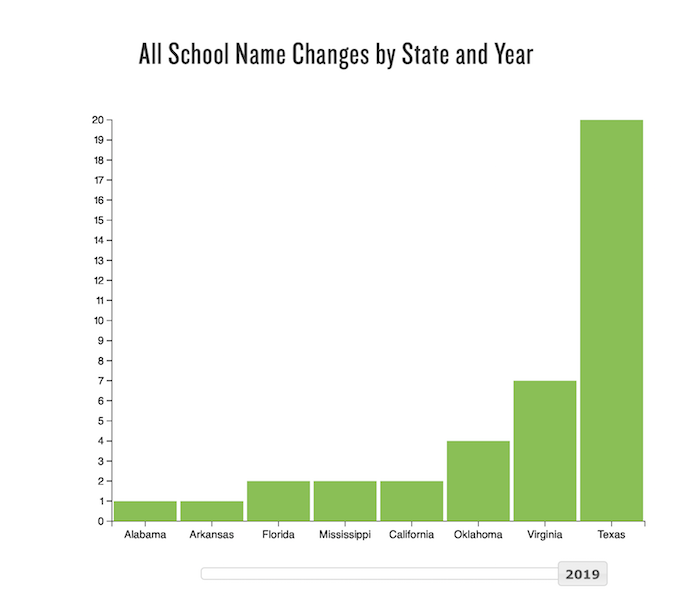Southern Poverty Law Center: New report on the status of Confederate monuments

Now, three years after the Charleston massacre, more than 100 monuments and other symbols of the Confederacy have been removed. But far more remain. In this updated survey, the Southern Poverty Law Center identified 1,728 Confederate monuments, place names and other symbols still in public spaces, both in the South and across the nation.* These include:
● 772 monuments, more than 300 of which are in Georgia, Virginia or North Carolina;
● 100 public schools named for Robert E. Lee, Jefferson Davis or other Confederate icons;
● 80 counties and cities named for Confederates;
● 9 observed state holidays in five states; and
● 10 U.S. military bases.
Critics may say removing a flag or monument, renaming a military base or school, or ending a state holiday is tantamount to “erasing history.” In fact, across the country but mostly in the South, Confederate flag supporters held more than 350 rallies in the six months after the Charleston attack. In Charlottesville, Virginia, the city council’s vote to remove statues of Robert E. Lee and Stonewall Jackson sparked several demonstrations, including the deadly protest on Aug. 11-12, 2017, one of the largest white supremacist rallies in decades.
But the argument that the Confederate flag and other displays represent “heritage, not hate” ignores the near-universal heritage of African Americans whose ancestors were enslaved by the millions in the South. It trivializes their pain, their history and their concerns about racism — whether it’s the racism of the past or that of today.